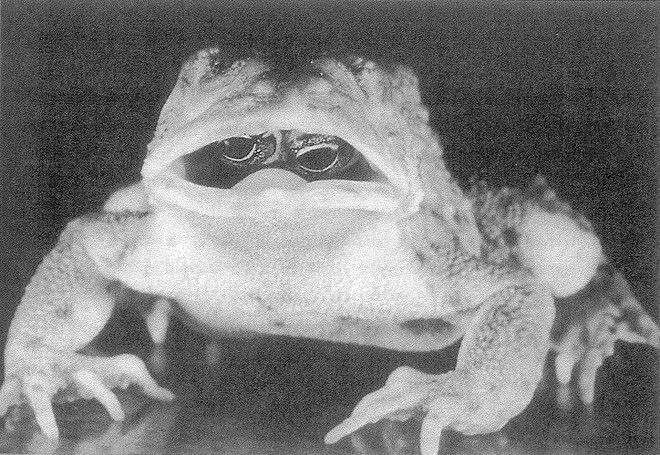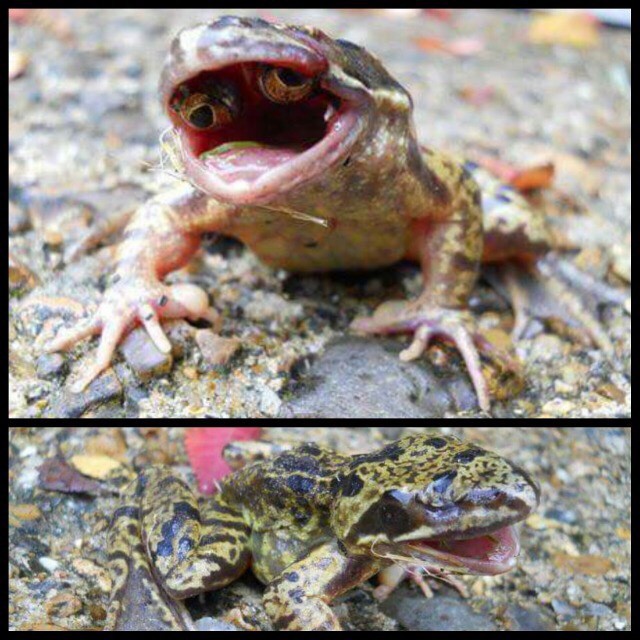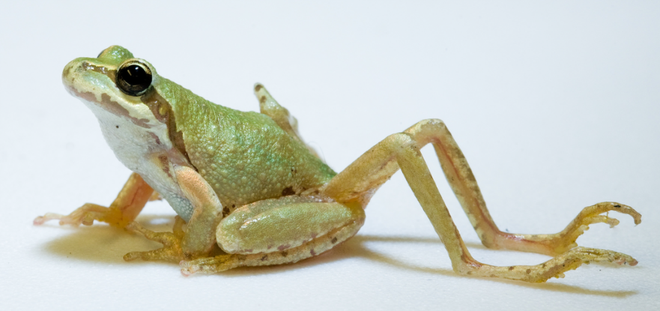Two little girls living in Ontario, Canada found this unique toad in their small garden. This toad was most likely affected by a genetic mutation called macromutation.

Macromutations cause major effects on an organism, by changes in regulatory genes, which govern the expression of a series of structural genes. While natural adaptation is driven by a series of small changes in the genome, biologists believe that macroscopic mutations are the source of adaptation.
According to a report by Princeton University, macromutation appears to be the only explanation for the differences in the number of segments on the bodies of arthropods, because very few genetic changes are needed to cause such great physical changes.
Polydactyly in cats is another example of a marked physical change, which can lead to a small change or even a change in the phenotype of an individual species, just as flies appear with double wings or lack of wings. However, some people still believe that macro mutations do not have much influence on the evolutionary process.

Multiple toe deformities in cats
It is unclear when this photo was taken, only that it was taken by Mr. Scott Gardner of The Hamilton Spectator – a local newspaper in the town of Hamilton, Canada. The photo first appeared in the 1996 book Climbing Mount Improbable by Richard Dawkins, with the caption: “Macromutation is real. This strange toad with eyes in the roof of its mouth was found in a garden in Canada. Originally published in local newspaper The Hamilton Spectator.”

Another example of macro mutation.
A more detailed description of the photo is also printed in the book: “Photo 3.2 was taken by photographer Scott Gardner of The Hamilton Spectator. This toad was found by two little girls in their garden in Hamilton, Ontario. The two little girls placed the toad on the kitchen table so the photographer could take this photo. Looking from the outside, there are no eyes on its head. But when it opened its mouth, it also seemed more aware of its surroundings, Gardner said.
It is suggested that the cause of this mutation is infection with the trematode parasite ( Ribeiroia ondatrae ). Many reports have shown that trematode infections are associated with an increase in limb mutations in amphibians, especially missing legs, deformities and additional hind legs.

Additional hind limb mutations in frogs due to trematode parasite infection
A 2002 study by Geoffrey Stopper, Department of Biology at Sacred Heart University in the United States, said, “Trematode parasites cause major abnormalities and disruptions in cell development, especially related to the limb growth tissue of infected individuals.”
However, there has been no official confirmation that trematode infection can cause eye displacement in individuals. Therefore, until now, the mutation of this small Canadian toad is still a strange mystery that cannot be solved.





